| Pages:
1
2 |
FragranceLover89
Hazard to Self
 
Posts: 72
Registered: 13-8-2019
Member Is Offline
|
|
Reduction of Ketones to alcohols in Tween 20 vs THF
I am trying to reduce some ketones and diketones to alcohols using Zinc/ NH4Cl/THF. However, I want to use Tween 20 instead of THF to lower cost and
because I don't want THF contaminating my product. I believe THF is somewhat critical due to its ability to act as a lewis base complexion agent. Can
Tween 20 do the same thing?
Attachment: Hekmatshoar2002_Article_Zinc-PromotedReductionOf12-Dik.pdf (35kB)
This file has been downloaded 270 times
[Edited on 29-10-2020 by FragranceLover89]
[Edited on 30-10-2020 by FragranceLover89]
|
|
|
Texium
Administrator
       
Posts: 4508
Registered: 11-1-2014
Location: Salt Lake City
Member Is Offline
Mood: PhD candidate!
|
|
I highly doubt that it’s been tried before. Why don’t you give it a go?
|
|
|
Texium
|
Thread Moved
29-10-2020 at 20:09 |
FragranceLover89
Hazard to Self
 
Posts: 72
Registered: 13-8-2019
Member Is Offline
|
|
I want advice before I try it.
|
|
|
Texium
Administrator
       
Posts: 4508
Registered: 11-1-2014
Location: Salt Lake City
Member Is Offline
Mood: PhD candidate!
|
|
Well my advice is to try it.
It’s a very unconventional choice of solvent you have, so it’s hard to say whether it will work or not. It contains many ethers, so in theory it
could plausibly serve the same purpose as THF, but it also has a much, much higher BP, so your alcohols better be volatile or you won’t have much
chance of isolating them. I think it’s an interesting idea.
|
|
|
FragranceLover89
Hazard to Self
 
Posts: 72
Registered: 13-8-2019
Member Is Offline
|
|
I tried it today (incorrectly). One of the signs of progress is the disappearance of Zn metal. I cannot say whether any Zn reacted.
- Initially I let it stir for 3 hrs at room temperature but saw no color change.
- I was worried about tween being too acidic so I mistakenly added some NaHCO3, which produced ammonia with NH4Cl.
- I added more NH4Cl
- I put it on heat and I accidentally let it go to dryness (tween gets soapy). When I re-hydrated it the color had become darker.
- The paper says ketones are only reduced at 60C so I have to try this again with heat.
[Edited on 30-10-2020 by FragranceLover89]
[Edited on 30-10-2020 by FragranceLover89]
|
|
|
Corrosive Joeseph
National Hazard
   
Posts: 915
Registered: 17-5-2015
Location: The Other Place
Member Is Offline
Mood: Cyclic
|
|
Mandal, T., Jana, S., & Dash, J. (2017). Zinc-Mediated Efficient and Selective Reduction of Carbonyl Compounds.
European Journal of Organic Chemistry, 2017(33), 4972–4983.
Abstract :
Simple yet unknown! Aldehydes and ketones can be easily reduced to the corresponding alcohols with Zn/NH4Cl, which is used for pinacol coupling
reactions. Chemoselective reduction of aldehydes in the presence of ketones is achieved. Isatins can be efficiently reduced at the C3 position.
/CJ
Attachment: Zinc-Mediated Efficient and Selective Reduction of Carbonyl Compounds.pdf (1.3MB)
This file has been downloaded 302 times
Being well adjusted to a sick society is no measure of one's mental health
|
|
|
FragranceLover89
Hazard to Self
 
Posts: 72
Registered: 13-8-2019
Member Is Offline
|
|
I will try again tomorrow.
[Edited on 30-10-2020 by FragranceLover89]
|
|
|
Boffis
International Hazard
    
Posts: 1836
Registered: 1-5-2011
Member Is Offline
Mood: No Mood
|
|
Wouldn't PEGs (polyethylene glycols) and Glymes (alkoxyglycols) be a simpler choice or do you have a lot of tween 20?
|
|
|
FragranceLover89
Hazard to Self
 
Posts: 72
Registered: 13-8-2019
Member Is Offline
|
|
I already have a lot of tween 20. I found research saying tween 20 at 200 ppm offered maximal corrosion resistance to carbon steel by complexion with
Zn2+ ions. Higher concentrations had diminishing returns. This might be the concentration I should aim for. Earlier I added 50% tween 20 to 50%
aqueous NH4Cl, which might lead to monolayers of tween coating the zinc surface. Perhaps I need only a catalytic amount because tween can form micella
above it's critical concentration.
[Edited on 30-10-2020 by FragranceLover89]
Attachment: corrosion-inhibition-of-carbon-steel-by-tween-20-selfassembling-monolayers.pdf (177kB)
This file has been downloaded 200 times
|
|
|
FragranceLover89
Hazard to Self
 
Posts: 72
Registered: 13-8-2019
Member Is Offline
|
|
I forgot to mention this reaction may have worked. The problem is I don't know how to distinguish between the alcohol and ketone I had. I read PQQ is
a dione with different colored redox states. Maybe I should try that.
[Edited on 30-10-2020 by FragranceLover89]
|
|
|
FragranceLover89
Hazard to Self
 
Posts: 72
Registered: 13-8-2019
Member Is Offline
|
|
Here is the new reaction.
Collected some zinc fillings. Weight is less than 0.1 g. Put it in a jar with some (~7-8 ml) saturated NH4Cl solution. Small amounts of tween from
yesterday coated the pipette and was enough to cause bubbles to form in solution. No excess tween was added. A few dashs of turmeric were added as a
visual indicator of reduction. Heating was turned on (not sure what temp I have a really cheap setup)
[Edited on 30-10-2020 by FragranceLover89]
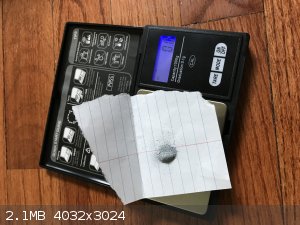 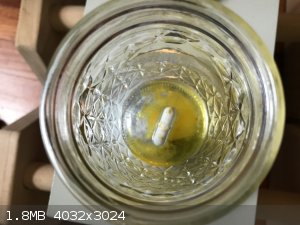 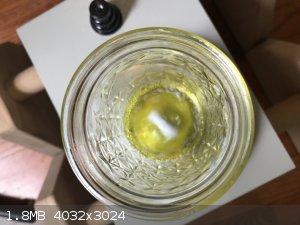
|
|
|
FragranceLover89
Hazard to Self
 
Posts: 72
Registered: 13-8-2019
Member Is Offline
|
|
Maybe this was not the smartest reduction. I cannot find any information of curcumin with only the ketone groups selectively reduced. It might not be
possible due to the aromaticity. I will try PQQ or acetone.
|
|
|
FragranceLover89
Hazard to Self
 
Posts: 72
Registered: 13-8-2019
Member Is Offline
|
|
The solution has gotten lighter. Either this method works or the curcumin is being degraded in solution.
[Edited on 30-10-2020 by FragranceLover89]
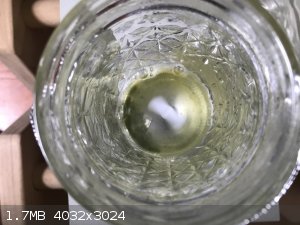
[Edited on 30-10-2020 by FragranceLover89]
|
|
|
FragranceLover89
Hazard to Self
 
Posts: 72
Registered: 13-8-2019
Member Is Offline
|
|
The solution eventually turned almost colorless. It was taken off heating and let sit for ~1 hr with Al foil sitting on top. When I returned some
NH4Cl crystallized out and the color slightly returned to a darker yellow. Does this mean some of the curcumin alcohol reoxidized? There is also an
unusual smell I suspect is degradation of curcumin but it might also be NH4Cl.
I decided to add some PQQ to see if it can be reduced. The PQQ comes in small pink capsules that turned the solution brown with a light pink hue. I
added two (10 mg) capsules along with more NH4Cl solution.
[Edited on 30-10-2020 by FragranceLover89]
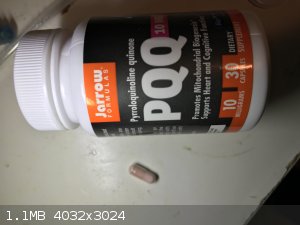 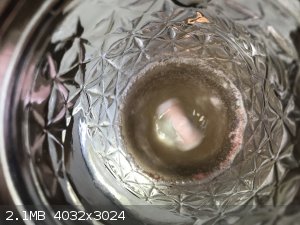
[Edited on 30-10-2020 by FragranceLover89]
|
|
|
FragranceLover89
Hazard to Self
 
Posts: 72
Registered: 13-8-2019
Member Is Offline
|
|
After a few minutes of stirring it has developed into a red solution.
[Edited on 30-10-2020 by FragranceLover89]
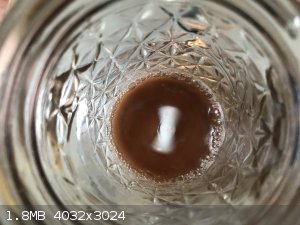
|
|
|
FragranceLover89
Hazard to Self
 
Posts: 72
Registered: 13-8-2019
Member Is Offline
|
|
for reference this is the color of vitamin c mixed with PQQ -> PQQH2
[Edited on 30-10-2020 by FragranceLover89]
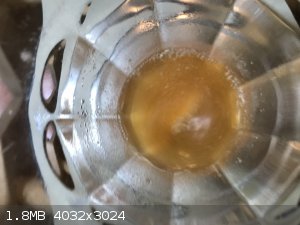
|
|
|
FragranceLover89
Hazard to Self
 
Posts: 72
Registered: 13-8-2019
Member Is Offline
|
|
This is PQQ unreduced.
[Edited on 30-10-2020 by FragranceLover89]
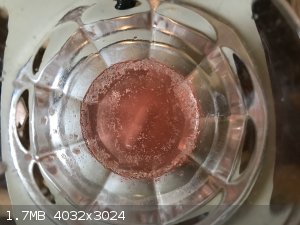
|
|
|
FragranceLover89
Hazard to Self
 
Posts: 72
Registered: 13-8-2019
Member Is Offline
|
|
My camera does not do it justice but the PQQ in the zinc reduction (right) mixture looks more golden than the unreduced PQQ (Left).
[Edited on 30-10-2020 by FragranceLover89]
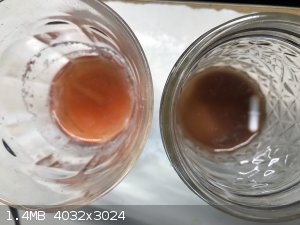
[Edited on 30-10-2020 by FragranceLover89]
|
|
|
FragranceLover89
Hazard to Self
 
Posts: 72
Registered: 13-8-2019
Member Is Offline
|
|
I am setting up the experiment again. This time with golden PQQH2 (Pipette on left) and pink PQQ (Pipette on right and pink cup) references.
[Edited on 30-10-2020 by FragranceLover89]
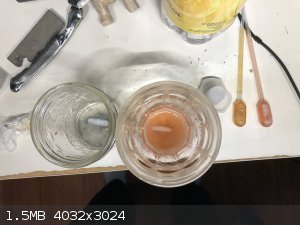
[Edited on 30-10-2020 by FragranceLover89]
|
|
|
FragranceLover89
Hazard to Self
 
Posts: 72
Registered: 13-8-2019
Member Is Offline
|
|
It has been 5 minutes and the color of the zinc redux seems more golden on camera than the unreduced PQQ form. In addition a red precipitate has
formed in the zinc redux very similar to a red precipitate formed in the PPQH2 reference. I don't know what this red precipitate is; a metal complex?
[Edited on 30-10-2020 by FragranceLover89]
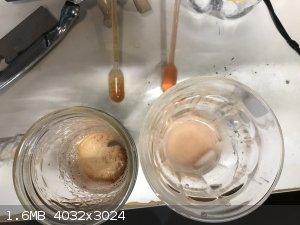
|
|
|
FragranceLover89
Hazard to Self
 
Posts: 72
Registered: 13-8-2019
Member Is Offline
|
|
Some more photos.
[Edited on 30-10-2020 by FragranceLover89]
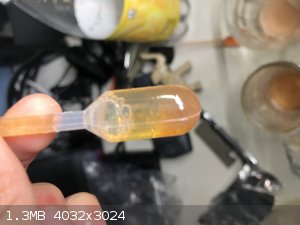 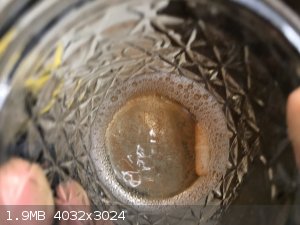 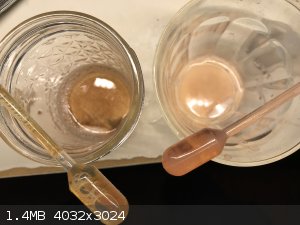
[Edited on 30-10-2020 by FragranceLover89]
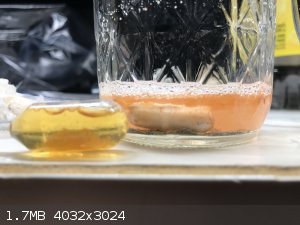 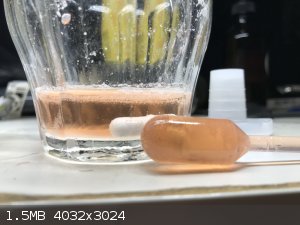
|
|
|
FragranceLover89
Hazard to Self
 
Posts: 72
Registered: 13-8-2019
Member Is Offline
|
|
Ok so I played around and found that adding household ammonia (with some surfactant) caused the zinc redux to turn golden.
[Edited on 30-10-2020 by FragranceLover89]
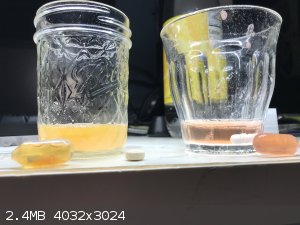
|
|
|
FragranceLover89
Hazard to Self
 
Posts: 72
Registered: 13-8-2019
Member Is Offline
|
|
Ammonia on it's own induces this color change so it has nothing to do with the zinc redux.
|
|
|
FragranceLover89
Hazard to Self
 
Posts: 72
Registered: 13-8-2019
Member Is Offline
|
|
I think I have figured it out. Adding a citric acid ammonium hydroxide buffer solution (slightly acidic) makes PQQ reduce to PQQH2. I think citric
acid cleans the zinc metal increasing the reaction rate. I was able to get this color change without making the solution basic. The key is citric
acid. Acidifying the solution also probably stabilizes the reduced form through hydrogen bonding.
[Edited on 30-10-2020 by FragranceLover89]
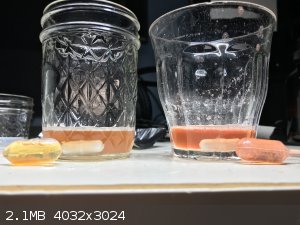
[Edited on 30-10-2020 by FragranceLover89]
[Edited on 30-10-2020 by FragranceLover89]
|
|
|
FragranceLover89
Hazard to Self
 
Posts: 72
Registered: 13-8-2019
Member Is Offline
|
|
I found an even better way to do this reaction without NH4Cl. Lol.
L-alanine + zinc + tween 20 produced a better product than the NH4Cl method.
Zinc redux left PQQ Right
[Edited on 30-10-2020 by FragranceLover89]
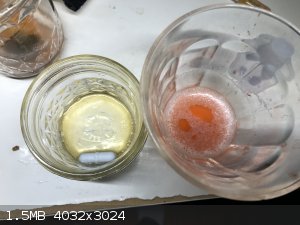
[Edited on 30-10-2020 by FragranceLover89]
[Edited on 30-10-2020 by FragranceLover89]
[Edited on 31-10-2020 by FragranceLover89]
|
|
|
| Pages:
1
2 |